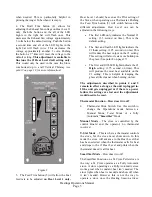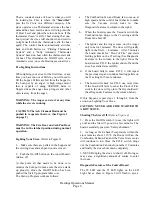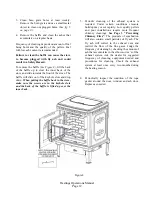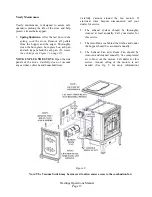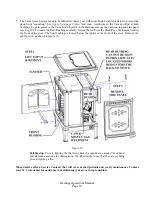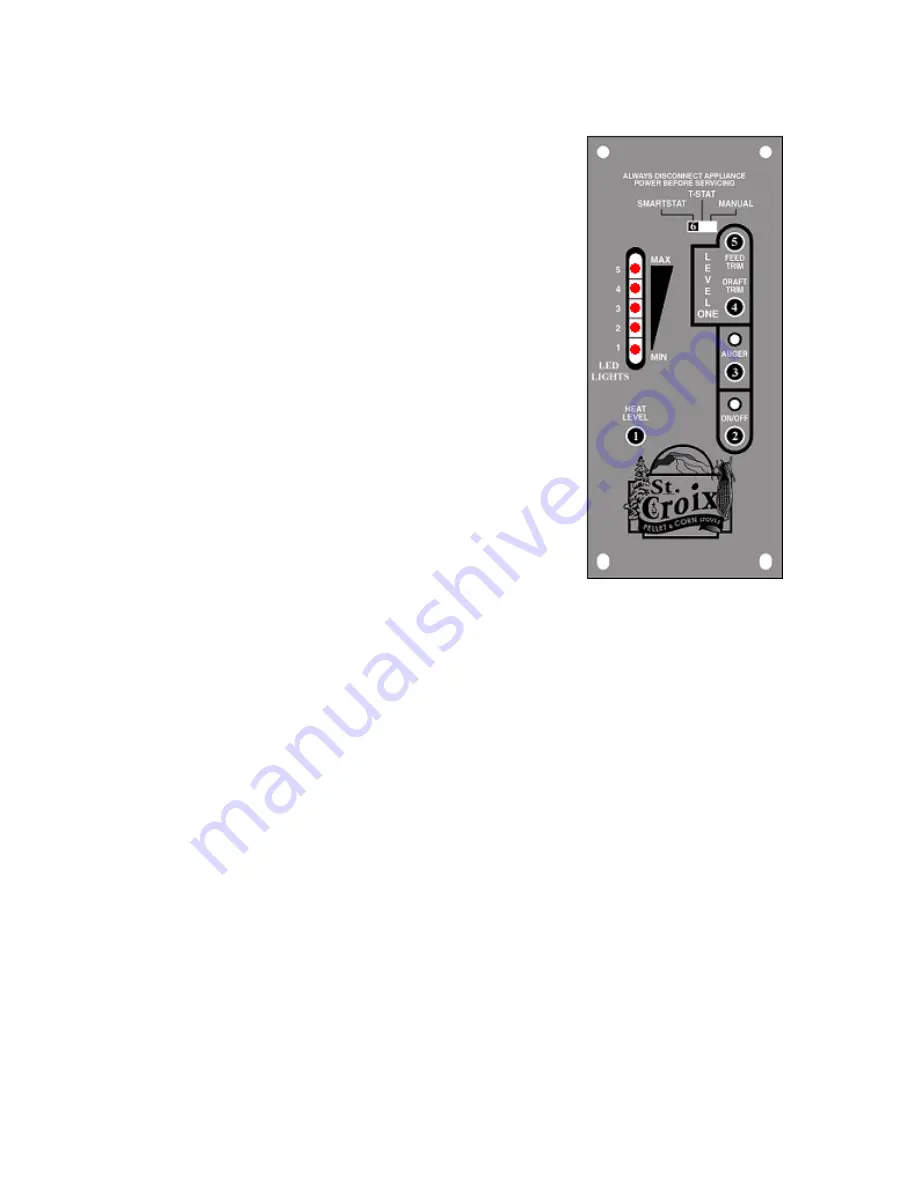
Hastings
Operations Manual
Page 19
9.
Why is my glass dirty and how to use the Fan button to help
correct it?
Normal operation of your St. Croix stove will produce
a build-up on the glass that should be wiped off on a daily basis.
However certain types of pellets or extended burning on the low
setting will cause the glass to smoke up faster.
A heavy black build-up on the glass could indicate a problem.
You will find two types of heavy build-up that should be looked
into further.
a.
A heavy black sooty build-up that wipes off easily with a dry
paper towel.
Solution:
This type of build up usually means not enough
combustion air. First look at the condition of the
burnpot to determine that it doesn’t need
cleaning.
If the pot is plugged
the burning
pellets will be lacking in combustion air and
produce black soot. Clean the pot and only adjust
the damper after observing the burn. If you see
black tips of smoke on the flame open the
damper in small increments (Read “Damper
Adjustment” on page 8). After adjusting the
damper wait 15 minutes for the pot to balance out
before making another adjustment.
b.
A heavy shiny “glazed” build up on the glass usually means too much air when the stove is
burning on the lower levels (levels 1 & 2). When burning the stove like this the pellets “flame-out”
every so often, when the auger feeds more pellets they tend to smolder too much causing this
stubborn build-up on the glass.
Solution:
First trim the combustion fan voltage for level 1 by pressing the fan button once
(see button in figure to the right indicated with the arrow). You will see all five
lights on the light bar flash once. This will reduce the combustion fan voltage by
approximately 5 volts. Stoves hooked to tall vertical chimneys may need another
adjustment by pressing the fan button again. All five lights on the light bar will
flash twice. This will reduce the voltage again. Pressing the fan button again or if
the stove is unplugged will reset the voltage to the default setting. This will help
compensate for the natural draft in the chimney. Secondly read the section in the
Operations Manual on adjusting the damper. close the damper until the flame gets
lazy with black tips on the flame. Now open the damper in small increments of
1/16
th
of an inch or less. Wait 15 minutes after each adjustment to observe the
burn. Once the flame becomes brisk without black tips you have the correct
amount of air. Do not open the damper too far (Read “Preventing Chimney Fires
on page 3 of this manual)
Remember: Any of the above mentioned adjustments to the #1 setting using the Draft Trim
or the Feed Trim on the control board will be lost if the unit gets unplugged or if there is a
Power Failure.

